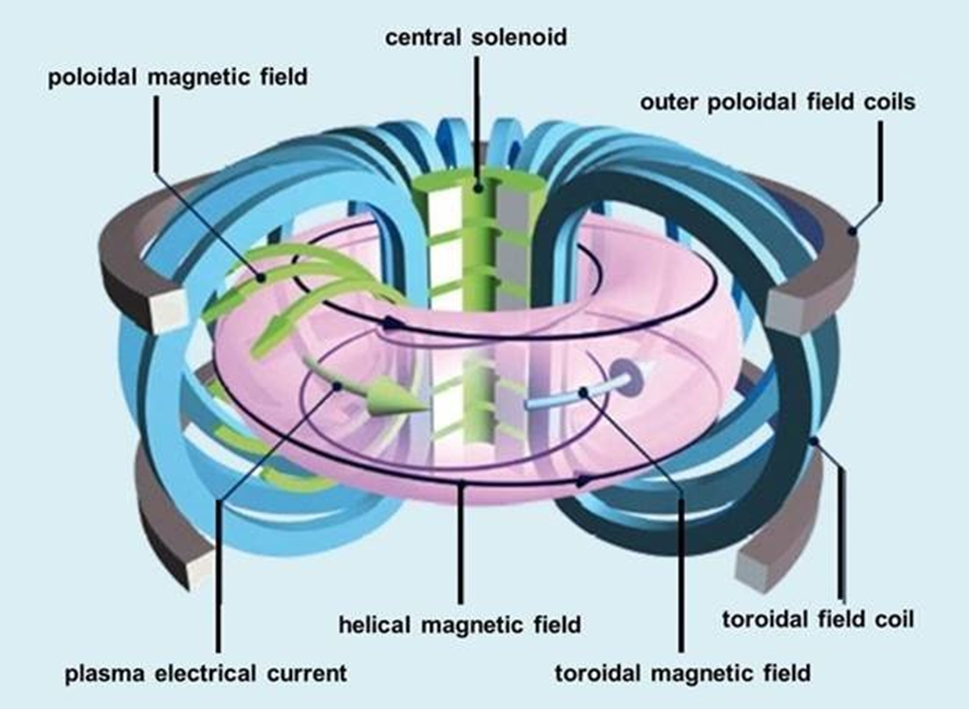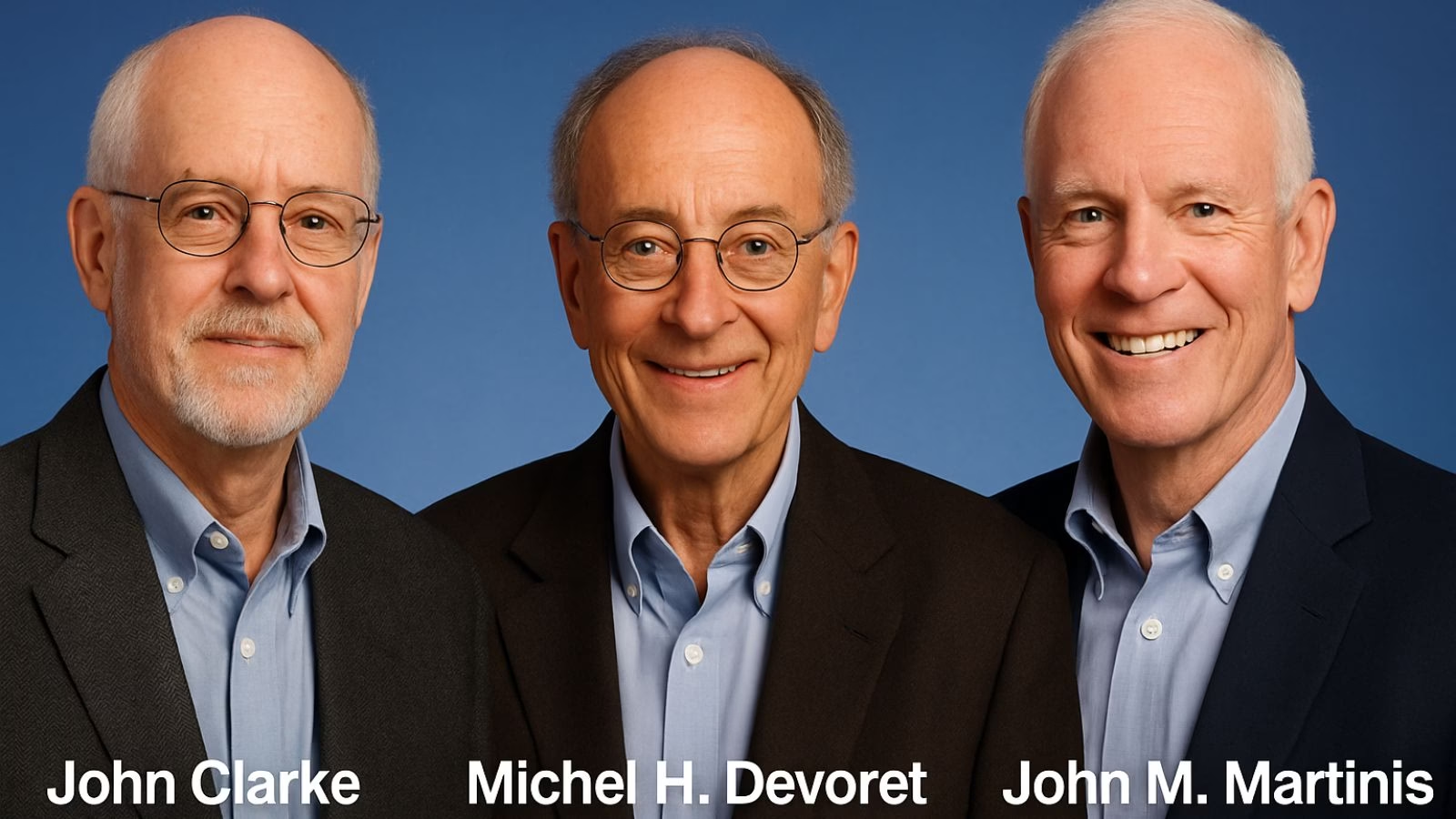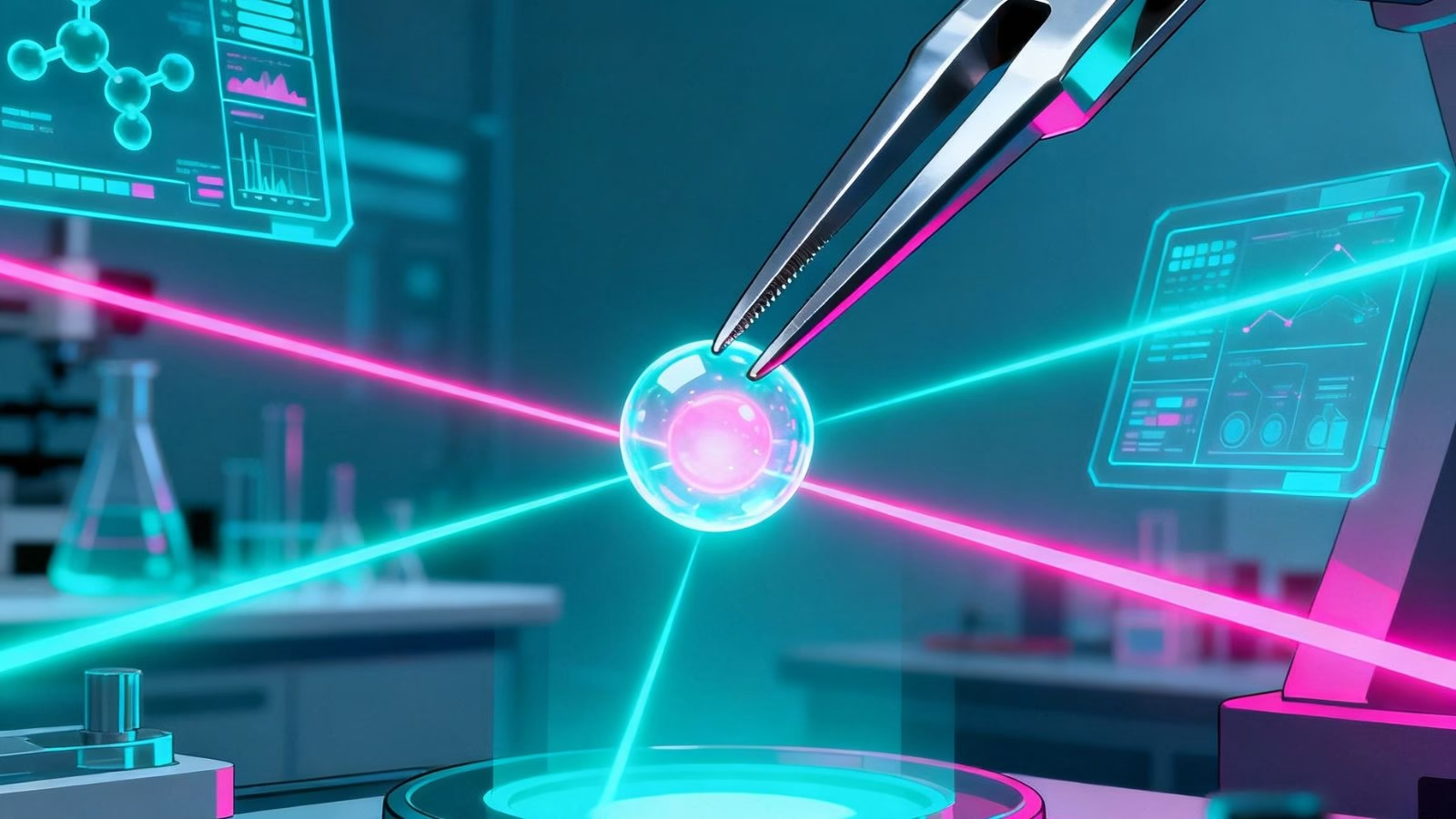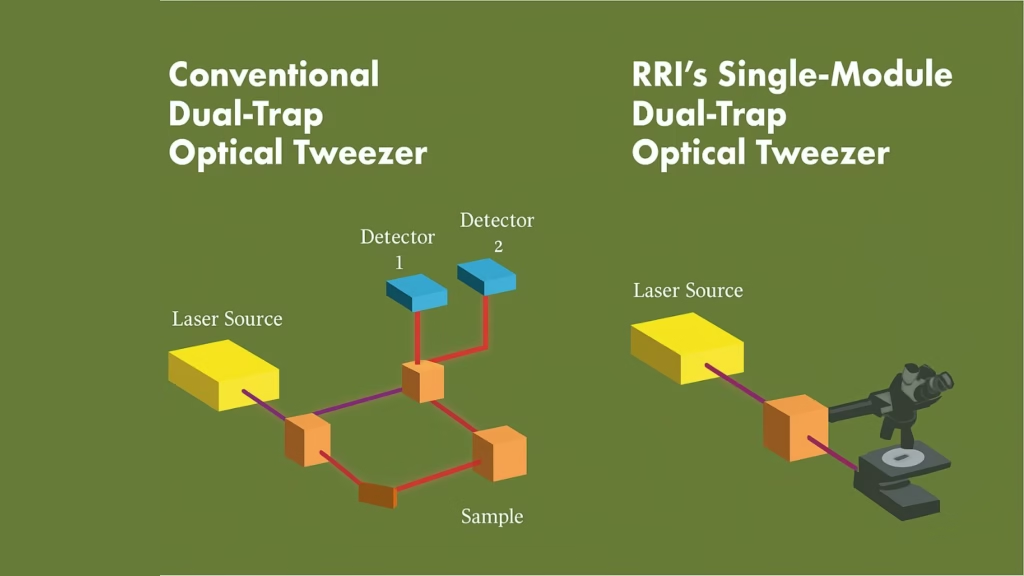Space & Physics
Fusion Energy: The quest for unlimited power
The potential benefits of fusion energy are enormous. It could provide a nearly limitless supply of energy, reduce our reliance on fossil fuels, and help combat climate change

Imagine a world with a virtually unlimited source of clean energy that could power our cities, industries, and homes without the harmful emissions and environmental impacts of fossil fuels. This isn’t science fiction—it’s the promise of fusion energy. But what exactly is fusion energy, and how close are we to making it a reality?
Nuclear fusion involves combining light elements, such as hydrogen, to form heavier elements, releasing a significant burst of energy in the process. This process, which powers the heat and light of the Sun and other stars, is praised for its potential as a sustainable, low-carbon energy source.
This process contrasts with the nuclear fission process used in nuclear power plants, where heavy atomic nuclei are split into lighter ones. But this is fraught with radioactive waste and safety concerns.
The road to practical fusion energy is steep and fraught with challenges. The foremost obstacle is achieving and maintaining the extremely high temperatures and pressures required for fusion. Similar to those at the Sun’s core, these conditions are necessary to overcome the electrostatic forces that repel the positively charged atomic nuclei. For decades, scientists have experimented with different methods to achieve these conditions. The two primary approaches are magnetic confinement and inertial confinement.
Magnetic confinement, as seen in the tokamak design, employs powerful magnetic fields to contain hot plasma within a doughnut-shaped chamber. Inertial confinement, on the other hand, involves compressing a small pellet of fusion fuel with intense laser beams to achieve the conditions for fusion. Both methods have seen significant advancements but are yet to reach the break-even point, where the energy output from fusion equals the energy input required to sustain the reaction. However, recent breakthroughs have brought us closer than ever to this elusive goal.
The primary fuel for nuclear fusion is deuterium and tritium. Deuterium and tritium are isotopes of hydrogen, the universe’s most abundant element. Isotopes are members of a family of elements that all have the same number of protons but different numbers of neutrons. While all isotopes of hydrogen have one proton, deuterium has one neutron, and tritium has two, so their ion masses are heavier than those of protium, the isotope of hydrogen with no neutrons. Deuterium can be extracted from seawater, while tritium can be bred from lithium. When deuterium and tritium fuse, they form a helium atom, which has two protons and two neutrons, and release an energetic neutron. These energetic neutrons could serve as the foundation for generating energy in future fusion power plants.
Power plants today generate electricity using fossil fuels, nuclear fission, or renewable sources like wind or water. Regardless of the energy source, these plants convert mechanical power, such as the rotation of a turbine, into electrical power. In a coal-fired steam station, coal combustion turns water into steam, which then drives turbine generators to produce electricity.
The tokamak is an experimental machine designed to harness fusion energy. Inside a tokamak, the energy produced through atomic fusion is absorbed as heat by the vessel’s walls. Similar to conventional power plants, a fusion power plant will use this heat to produce steam, which then generates electricity via turbines and generators.
The international ITER project in France is the largest and most ambitious tokamak experiment to date. ITER aims to demonstrate the feasibility of fusion as a large-scale and carbon-free source of energy
At the core of a tokamak is a doughnut-shaped vacuum chamber. Under extreme heat and pressure inside this chamber, gaseous hydrogen fuel becomes plasma, creating an environment where hydrogen atoms can fuse and release energy. The plasma’s charged particles are controlled and shaped by large magnetic coils surrounding the vessel. This property allows physicists to confine the hot plasma away from the vessel walls. The term “tokamak” is derived from a Russian acronym for “toroidal chamber with magnetic coils.”

Fusion energy scientists consider tokamaks to be the leading plasma confinement design for future fusion power plants. In a tokamak, magnetic field coils confine plasma particles, enabling the plasma to reach the conditions necessary for fusion.
The international ITER project in France is the largest and most ambitious tokamak experiment to date. ITER aims to demonstrate the feasibility of fusion as a large-scale and carbon-free source of energy. It’s a collaboration involving 35 countries, including India, and is expected to produce first plasma in the coming years.
The primary objective of ITER is to investigate and demonstrate burning plasmas—plasmas where the energy from helium nuclei produced by fusion reactions is sufficient to maintain the plasma’s temperature, reducing or eliminating the need for external heating. ITER will also test the feasibility and integration of essential fusion reactor technologies, such as superconducting magnets, remote maintenance, and systems for exhausting power from the plasma. Additionally, it will validate tritium breeding module concepts that could enable tritium self-sufficiency in future reactors.
ITER made headlines just last year when it achieved a major milestone: the successful installation of its first-of-a-kind superconducting magnet system. This system is crucial for creating the powerful magnetic fields needed to contain the superheated plasma. This achievement brings us one step closer to achieving sustained fusion reactions.
On October 3, 2023, the Joint European Torus (JET) project in Oxford produced power for five seconds, resulting in a “ground-breaking record” of 69 megajoules of power. That energy was generated using only 0.2 milligrams of fuel.
An alternative method is inertial confinement fusion, where a compact fusion fuel pellet is compressed by high-powered lasers. The National Ignition Facility (NIF) in the United States is leading the way in this research. On December 5, 2022, the National Ignition Facility (NIF), located at the Lawrence Livermore National Laboratory in California, directed a series of lasers to emit 2.05 megajoules of energy towards a small cylinder containing a frozen pellet of deuterium and tritium, which are denser variants of hydrogen. The pellet underwent compression, resulting in the generation of temperatures and pressures of sufficient magnitude to induce fusion of the hydrogen contained inside it. During an extremely brief ignition, the merging atomic nuclei discharged 3.15 megajoules of energy, surpassing the amount of energy necessary to heat the pellet by approximately 50 percent. This stage is crucial in the journey towards the practical realisation of fusion energy production.
On October 3, 2023, the Joint European Torus (JET) project in Oxford produced power for five seconds, resulting in a “ground-breaking record” of 69 megajoules of power. That energy was generated using only 0.2 milligrams of fuel. In addition, many private companies are making waves in the fusion energy scene.
While these achievements are remarkable, there are still many technical hurdles to overcome. We need to improve the efficiency and durability of fusion reactors, develop materials that can withstand the extreme conditions inside them, and create systems for safely handling and breeding tritium.
Despite these challenges, the potential benefits of fusion energy are enormous. It could provide a nearly limitless supply of energy, reduce our reliance on fossil fuels, and help combat climate change. Imagine a world where energy is abundant, clean, and available to all—fusion energy could make this vision a reality. As we look to the future, the quest for fusion energy represents one of the greatest scientific and engineering challenges of our time. It’s a testament to human ingenuity and our unwavering determination to solve the world’s most pressing problems.
Space & Physics
Nobel Prize in Physics: Clarke, Devoret, and Martinis Honoured for Pioneering Quantum Discoveries
The 2025 Nobel Prize in Physics honours John Clarke, Michel H. Devoret, and John M. Martinis for revealing how entire electrical circuits can display quantum behaviour — a discovery that paved the way for modern quantum computing.

The 2025 Nobel Prize in Physics has been awarded to John Clarke, Michel H. Devoret, and John M. Martinis for their landmark discovery of macroscopic quantum mechanical tunnelling and energy quantisation in an electric circuit, an innovation that laid the foundation for today’s quantum computing revolution.
Announcing the prize, Olle Eriksson, Chair of the Nobel Committee for Physics, said, “It is wonderful to be able to celebrate the way that century-old quantum mechanics continually offers new surprises. It is also enormously useful, as quantum mechanics is the foundation of all digital technology.”
The Committee described their discovery as a “turning point in understanding how quantum mechanics manifests at the macroscopic scale,” bridging the gap between classical electronics and quantum physics.
John Clarke: The SQUID Pioneer
British-born John Clarke, Professor Emeritus at the University of California, Berkeley, is celebrated for his pioneering work on Superconducting Quantum Interference Devices (SQUIDs) — ultra-sensitive detectors of magnetic flux. His career has been marked by contributions that span superconductivity, quantum amplifiers, and precision measurements.
Clarke’s experiments in the early 1980s provided the first clear evidence of quantum behaviour in electrical circuits — showing that entire electrical systems, not just atoms or photons, can obey the strange laws of quantum mechanics.
A Fellow of the Royal Society, Clarke has been honoured with numerous awards including the Comstock Prize (1999) and the Hughes Medal (2004).
Michel H. Devoret: Architect of Quantum Circuits
French physicist Michel H. Devoret, now the Frederick W. Beinecke Professor Emeritus of Applied Physics at Yale University, has been one of the intellectual architects of quantronics — the study of quantum phenomena in electrical circuits.
After earning his PhD at the University of Paris-Sud and completing a postdoctoral fellowship under Clarke at Berkeley, Devoret helped establish the field of circuit quantum electrodynamics (cQED), which underpins the design of modern superconducting qubits.
His group’s innovations — from the single-electron pump to the fluxonium qubit — have set performance benchmarks in quantum coherence and control. Devoret is also a recipient of the Fritz London Memorial Prize (2014) and the John Stewart Bell Prize, and is a member of the French Academy of Sciences.
John M. Martinis: Building the Quantum Processor
American physicist John M. Martinis, who completed his PhD at UC Berkeley under Clarke’s supervision, translated these quantum principles into the hardware era. His experiments demonstrated energy level quantisation in Josephson junctions, one of the key results now honoured by the Nobel Committee.
Martinis later led Google’s Quantum AI lab, where his team in 2019 achieved the world’s first demonstration of quantum supremacy — showing a superconducting processor outperforming the fastest classical supercomputer on a specific task.
A former professor at UC Santa Barbara, Martinis continues to be a leading voice in quantum computing research and technology development.
A Legacy of Quantum Insight
Together, the trio’s discovery, once seen as a niche curiosity in superconducting circuits, has become the cornerstone of the global quantum revolution. Their experiments proved that macroscopic electrical systems can display quantised energy states and tunnel between them, much like subatomic particles.
Their work, as the Nobel citation puts it, “opened a new window into the quantum behaviour of engineered systems, enabling technologies that are redefining computation, communication, and sensing.”
Space & Physics
The Tiny Grip That Could Reshape Medicine: India’s Dual-Trap Optical Tweezer
Indian scientists build new optical tweezer module—set to transform single-molecule research and medical Innovation

In an inventive leap that could open up new frontiers in neuroscience, drug development, and medical research, scientists in India have designed their own version of a precision laboratory tool known as the dual-trap optical tweezers system. By creating a homegrown solution to manipulate and measure forces on single molecules, the team brings world-class technology within reach of Indian researchers—potentially igniting a wave of scientific discoveries.
Optical tweezers, a Nobel Prize-winning invention from 2018, use focused beams of light to grab and move microscopic objects with extraordinary accuracy. The technique has become indispensable for measuring tiny forces and exploring the mechanics of DNA, proteins, living cells, and engineered nanomaterials. Yet, decades after their invention, conventional optical tweezers systems sometimes fall short for today’s most challenging experiments.
Researchers at the Raman Research Institute (RRI), an autonomous institute backed by India’s Department of Science and Technology in Bengaluru, have now introduced a smart upgrade that addresses long-standing pitfalls of dual-trap tweezers. Traditional setups rely on measuring the light that passes through particles trapped in two separate beams—a method prone to signal “cross-talk.” This makes simultaneous, independent measurement difficult, diminishing both accuracy and versatility.

The new system pioneers a confocal detection scheme. In a media statement, Md Arsalan Ashraf, a doctoral scholar at RRI, explained, “The unique optical trapping scheme utilizes laser light scattered back by the sample for detecting trapped particle position. This technique pushes past some of the long-standing constraints of dual-trap configurations and removes signal interference. The single-module design integrates effortlessly with standard microscopy frameworks,” he said.
The refinement doesn’t end there. The system ensures that detectors tracking tiny particles remain perfectly aligned, even when the optical traps themselves move. The result: two stable, reliable measurement channels, zero interference, and no need for complicated re-adjustment mid-experiment—a frequent headache with older systems.
Traditional dual-trap designs have required costly and complex add-ons, sometimes even hijacking the features of laboratory microscopes and making additional techniques, such as phase contrast or fluorescence imaging, hard to use. “This new single-module trapping and detection design makes high-precision force measurement studies of single molecules, probing of soft materials including biological samples, and micromanipulation of biological samples like cells much more convenient and cost-effective,” said Pramod A Pullarkat, lead principal investigator at RRI, in a statement.
By removing cross-talk and offering robust stability—whether traps are close together, displaced, or the environment changes—the RRI team’s approach is not only easier to use but far more adaptable. Its plug-and-play module fits onto standard microscopes without overhauling their basic structure.
From the intellectual property point of view, this design may be a game-changer. By cracking the persistent problem of signal interference with minimalist engineering, the new setup enhances measurement precision and reliability—essential advantages for researchers performing delicate biophysical experiments on everything from molecular motors to living cells.
With the essential building blocks in place, the RRI team is now exploring commercial avenues to produce and distribute their single-module, dual-trap optical tweezer system as an affordable add-on for existing microscopes. The innovation stands to put advanced single-molecule force spectroscopy, long limited to wealthier labs abroad, into the hands of scientists across India—and perhaps spark breakthroughs across the biomedical sciences.
Space & Physics
New Magnetic Transistor Breakthrough May Revolutionize Electronics
A team of MIT physicists has created a magnetic transistor that could make future electronics smaller, faster, and more energy-efficient. By swapping silicon for a new magnetic semiconductor, they’ve opened the door to game-changing advancements in computing.

For decades, silicon has been the undisputed workhorse in transistors—the microscopic switches responsible for processing information in every phone, computer, and high-tech device. But silicon’s physical limits have long frustrated scientists seeking ever-smaller, more efficient electronics.
Now, MIT researchers have unveiled a major advance: they’ve replaced silicon with a magnetic semiconductor, introducing magnetism into transistors in a way that promises tighter, smarter, and more energy-saving circuits. This new ingredient, chromium sulfur bromide, makes it possible to control electricity flow with far greater efficiency and could even allow each transistor to “remember” information, simplifying circuit design for future chips.
“This lack of contamination enables their device to outperform existing magnetic transistors. Most others can only create a weak magnetic effect, changing the flow of current by a few percent or less. Their new transistor can switch or amplify the electric current by a factor of 10,” the MIT team said in a media statement. Their work, detailed in Physical Review Letters, outlines how this material’s stability and clean switching between magnetic states unlocks a new degree of control.
Chung-Tao Chou, MIT graduate student and co-lead author, explains in a media statement, “People have known about magnets for thousands of years, but there are very limited ways to incorporate magnetism into electronics. We have shown a new way to efficiently utilize magnetism that opens up a lot of possibilities for future applications and research.”
The device’s game-changing aspect is its ability to combine the roles of memory cell and transistor, allowing electronics to read and store information faster and more reliably. “Now, not only are transistors turning on and off, they are also remembering information. And because we can switch the transistor with greater magnitude, the signal is much stronger so we can read out the information faster, and in a much more reliable way,” said Luqiao Liu, MIT associate professor, in a media statement.
Moving forward, the team is looking to scale up their clean manufacturing process, hoping to create arrays of these magnetic transistors for broader commercial and scientific use. If successful, the innovation could usher in a new era of spintronic devices, where magnetism becomes as central to electronics as silicon is today.
-

 Space & Physics5 months ago
Space & Physics5 months agoIs Time Travel Possible? Exploring the Science Behind the Concept
-

 Earth6 months ago
Earth6 months ago122 Forests, 3.2 Million Trees: How One Man Built the World’s Largest Miyawaki Forest
-

 Space & Physics6 months ago
Space & Physics6 months agoDid JWST detect “signs of life” in an alien planet?
-

 Know The Scientist5 months ago
Know The Scientist5 months agoNarlikar – the rare Indian scientist who penned short stories
-

 Society4 months ago
Society4 months agoShukla is now India’s first astronaut in decades to visit outer space
-

 Society4 months ago
Society4 months agoAxiom-4 will see an Indian astronaut depart for outer space after 41 years
-

 Earth4 months ago
Earth4 months agoWorld Environment Day 2025: “Beating plastic pollution”
-

 Society6 months ago
Society6 months agoRabies, Bites, and Policy Gaps: One Woman’s Humane Fight for Kerala’s Stray Dogs












